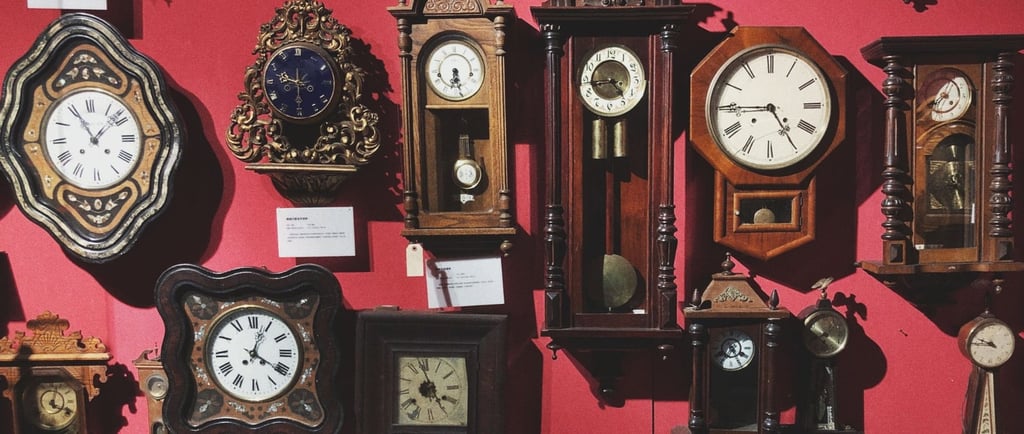Pendulum Perfection 🕰️Science in Timekeeping
Stories About Time: Measuring Moments Through History ⏳🌞🌕 from the chapter "Towards an Understanding of Linear Time" from the History Album. In this chapter we invite children to a journey through the fascinating evolution of timekeeping. Starting with observing the Sun🌞, and people who first noticed the movement of shadows to mark the day, to the people who noticed the phrases of the Moon 🌙, and tracked the lunar cycle to create months, these stories uncover humanity’s inventive ways of measuring moments.Children will marvel at ancient innovations, like sundials and lunar calendars, and explore cultural contributions, such as candle clocks 🕯️ and water clocks 🌊, that paved the way for modern timekeeping. Each story weaves history, science, and culture, showing how humans connected with the natural world to organize their lives. 🌿✨Through these narratives, children will see time not just as a number on a clock, or passing month on the callendar, but as a rich legacy of human curiosity and creativity. With hands-on activities like building sundials and journaling moon phases, they’ll become modern-day timekeepers, inspired to ask, “How did people measure time before clocks?” and “What can I discover about time?”This vivid exploration links the past to the present, sparking imagination and a deeper appreciation for the ingenuity of those who came before us. 🌍✨
HISTORY STORIES
12/17/20243 min read


Do you remember how the scientist, inventor, and astronomer Galileo Galilei 🌟 discovered the secret of the pendulum—how its steady back-and-forth motion could measure time? Galileo dreamed of using a pendulum to make a clock that was more accurate than ever before. But during his lifetime, that dream stayed just an idea.
Years later, another brilliant mind picked up Galileo’s discovery and brought it to life. His name was Christiaan Huygens ! He was a scientist, mathematician, and inventor from the Netherlands 🇳🇱, a country famous for its windmills 🌬️⛪ and tulips 🌷. Huygens was a lot like Galileo—full of curiosity, questions, and a love for solving problems.
Huygens was fascinated by the pendulum’s steady rhythm. “If Galileo was right,” he thought, “I can use this to make the most accurate clock the world has ever seen!” So, in 1656—over 50 years after Galileo’s discovery—Huygens set to work designing a clock powered by a swinging pendulum. And he succeeded! 🕰️
The world’s first pendulum clock was born! I have photos from the sketches of the clock. At the heart of the clock, the pendulum swung gently back and forth, like a tiny heartbeat of time. Above it, gears and levers worked together in perfect harmony to turn the clock hands. Tick… tock… tick… tock… ⏳. For the first time, seconds—the smallest moments of time—were measured accurately.
But how did Huygens make the pendulum clock so precise? He added a special part called the “escapement” ⚙️. The escapement made sure the pendulum kept swinging without slowing down. It was like a little helper for the pendulum, keeping it moving steadily.
Huygens’ invention sparked a pendulum clock revolution! 🕰️ Soon, clockmakers across Europe began designing all sorts of pendulum clocks, each one more creative and beautiful than the last. These weren’t just tools to tell time—they became works of art and symbols of status! 🎨✨
In England, clockmakers created longcase clocks, also known as grandfather clocks 🎩🕰️. These tall, elegant clocks stood proudly in the grand halls of wealthy homes, their steady tick-tock filling the air. It was as if they were saying, “Look how fancy I am!” Meanwhile, in France, clockmakers added a touch of elegance to the pendulum clocks , creating ornate wall clocks 🌟🕰️.
Pendulum clocks weren’t just about keeping time anymore—they became treasures, passed down through generations, admired for their beauty and precision.
But as amazing as these clocks were, they had one big problem—they got seasick! 🤢🌊 Imagine a pendulum clock on a rocking ship ⛵, trying to tick-tock while the waves made it swing faster, slower, or not at all. Poor pendulum! It was like trying to balance on a seesaw during a storm! ⚓🌪️
Sailors needed a clock that wouldn’t lose track of time, even when the ship was dancing with the waves. They couldn’t rely on pendulums wobbling like jelly! 🍮 “How can we keep track of time at sea without our clocks going bananas?” they wondered.
And so, the quest for a sea-proof clock began—a clock so steady it could brave the wildest waters. 🌊🕰️ Who would solve this slippery problem?
This is a story for another day… 🛠️✨
This story is part of the following Clock Stories Series which can be turned into Drama Play or Storybook Compilation.
Ancient Timekeeping
🌞 The Sundial ~3500 BCE
🌊 The Water Clock ~1500 BCE
🏛️ The Tower of the Winds ~50 BCE
Medieval Timekeeping
🕯️ The Candle Clock ~980 CE
🌌 Su Sung’s Astronomical Water Clock ~1092 CE
⏳ The Hourglass Sand Masters ~14th Century
🛎️ The Mechanical Church Bells ~14th Century
Science in Timekeeping
🌟 Astronomical Marvel: The Prague Clock ~1410 CE
🌍 Galileo’s Pendulum Discovery ~1602 CE
Modern Timekeeping
With Montessori joy,
Vanina 😊

